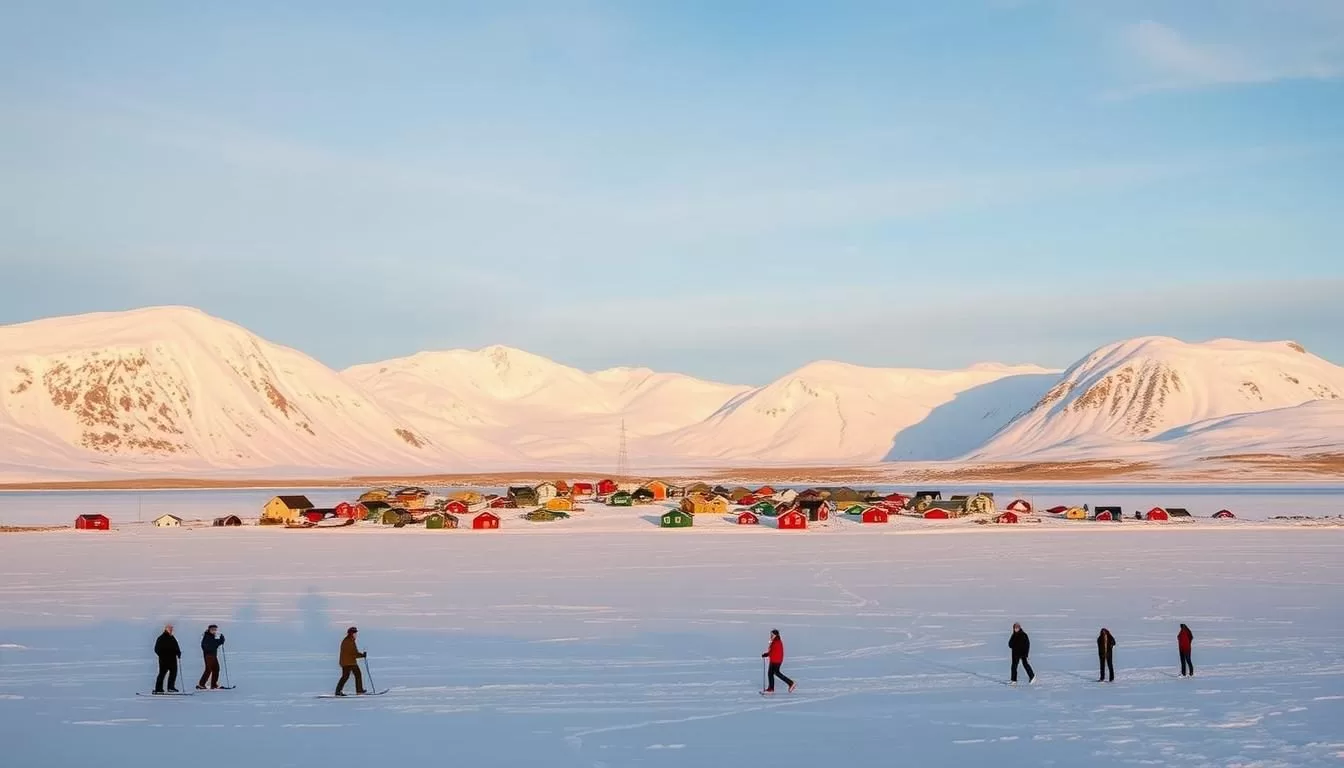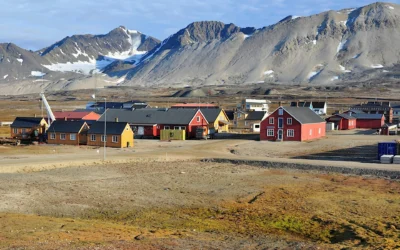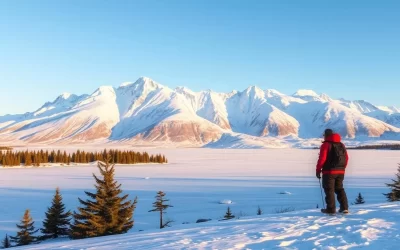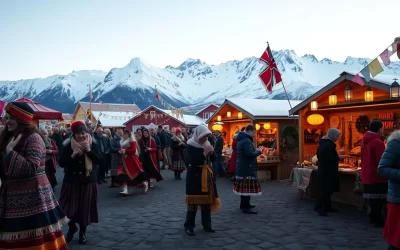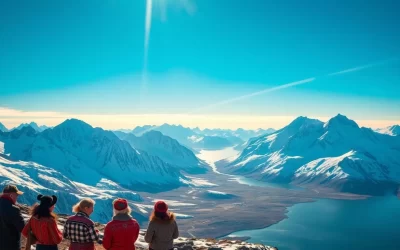✓ Accommodations✓ Flights✓ Rental Cars
Imagine a town where reindeer roam freely, and snowmobiles outnumber people. Welcome to the world’s northernmost city, a place that offers an unparalleled Arctic experience. As you plan your adventure to Svalbard, you’ll find that this unique destination is where you’ll eat, sleep, and embark on thrilling arctic escapades.
You are about to embark on a journey to one of the world’s most fascinating Arctic destinations. This comprehensive guide will walk you through the top experiences, activities, and attractions that make this remote frontier a must-visit. From dog sledding across frozen landscapes to witnessing the midnight sun, you’ll discover the essence of this extraordinary place.
Discovering the Arctic Frontier
You’re about to explore one of the world’s most remote and captivating regions: Svalbard and Jan Mayen. Located in the high Arctic, these territories are known for their breathtaking landscapes and unique cultural heritage.
Where is Svalbard and Jan Mayen?
Svalbard and Jan Mayen are two distinct Arctic territories. Svalbard is an archipelago in the Arctic Ocean, roughly halfway between mainland Norway and the North Pole. The largest island in the Svalbard archipelago is Spitsbergen, where you’ll find the vibrant community of Longyearbyen. On the other hand, Jan Mayen is a separate volcanic island located northeast of Iceland, characterized by its rugged terrain and stunning natural beauty.

Longyearbyen: The Northernmost City in the World
Longyearbyen is not just any city; it’s the northernmost permanent settlement in the world, with over 1,000 residents. Founded in 1906 by American John Munro Longyear as a coal mining town, Longyearbyen has evolved into a hub for Arctic tourism, research, and education. Despite its remote location, the city boasts a surprisingly modern infrastructure, making it an attractive place to visit or live.
As you explore Longyearbyen, you’ll discover its unique blend of history, culture, and Arctic adventure. From its origins as a mining town to its current status as a thriving Arctic community, Longyearbyen is a fascinating destination that offers something for everyone.
Fascinating Facts About Svalbard
As one of the world’s most northerly inhabited places, Svalbard offers a distinct blend of natural wonders and human experiences. This Arctic archipelago is not just known for its breathtaking landscapes but also for its intriguing cultural practices and strict environmental regulations.
The No-Death Policy
Svalbard has a unique “no-death policy.” Due to the permafrost, bodies buried in the local cemetery do not decompose, leaving remains from as far back as 100 years ago perfectly preserved. In fact, it’s not legally prohibited to die here, but the ground conditions make burials impractical. Pregnant women are also required to leave Svalbard about three weeks before their due date to give birth on the mainland, as the local medical facilities are not equipped to handle childbirth emergencies.
Unique Local Customs and Traditions
Life in Svalbard is characterized by unique customs that have been adopted over the years. For instance, it’s customary to remove your shoes when entering hotels, shops, and restaurants in Longyearbyen, a tradition that dates back to the coal mining era. This practice was initially intended to prevent coal dust from being tracked into buildings. The community is also remarkably diverse, with approximately 2,100 people from over 50 different countries calling Svalbard home.
Wildlife and Environmental Regulations
Svalbard is committed to preserving its fragile Arctic environment. To protect native bird populations, cats are banned in the archipelago. Moreover, due to the presence of polar bears, anyone venturing outside the town limits is required to carry a rifle for protection. These regulations highlight the community’s efforts to coexist with the unique and sometimes dangerous wildlife that Svalbard is known for.
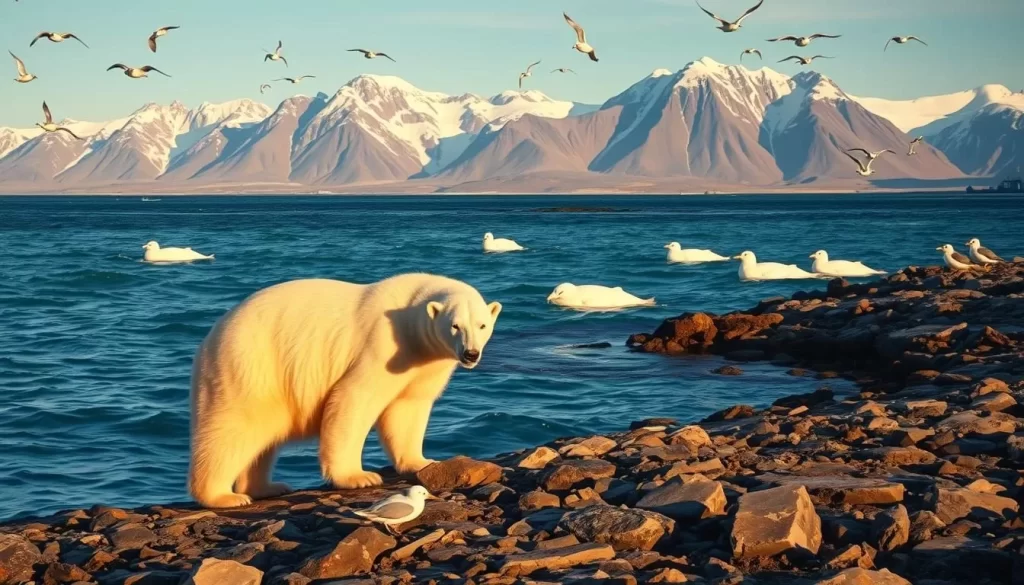
| Regulation | Purpose |
|---|---|
| No-death policy | Due to permafrost preventing decomposition |
| Ban on cats | To protect native bird populations |
| Carrying rifles outside town | For protection against polar bears |
Best Time to Visit Svalbard
The best time to visit Svalbard depends on what you’re looking for, as each season brings its own set of adventures and breathtaking landscapes. Svalbard, including Longyearbyen and the surrounding areas, offers a unique experience throughout the year.
Summer: The Midnight Sun Experience
Summer in Svalbard, from late April to early September, is characterized by the Midnight Sun, providing 24 hours of daylight. This period is ideal for hiking, wildlife viewing, and boat excursions in relatively milder temperatures averaging around 7°C (45°F).
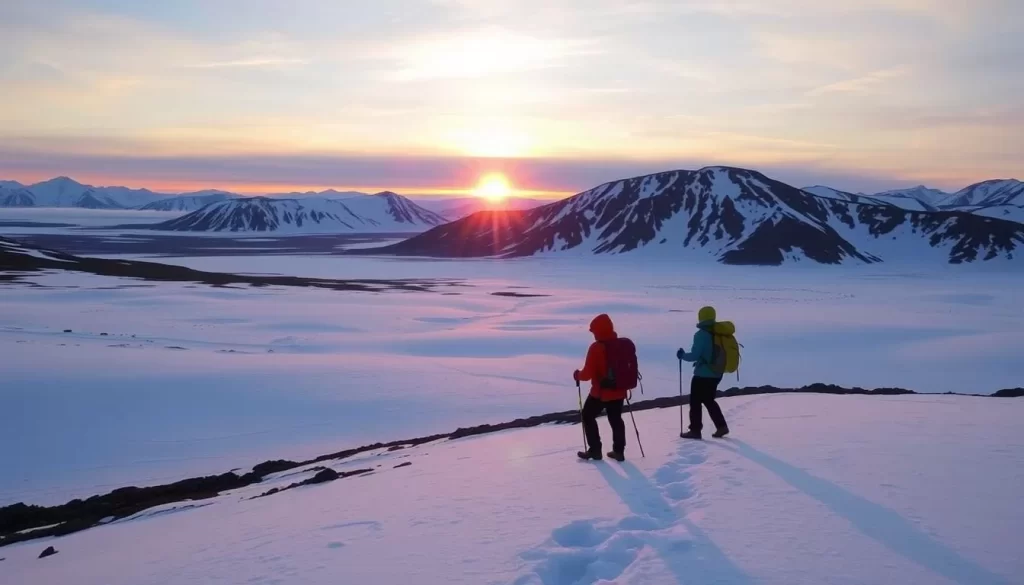
Winter: The Magical Polar Night
Winter, from December to March, brings the Polar Night or “Blue Season,” a period of continuous darkness. This season is perfect for northern lights viewing, dog sledding, and snowmobile safaris, though temperatures can drop to around -13°C (9°F).
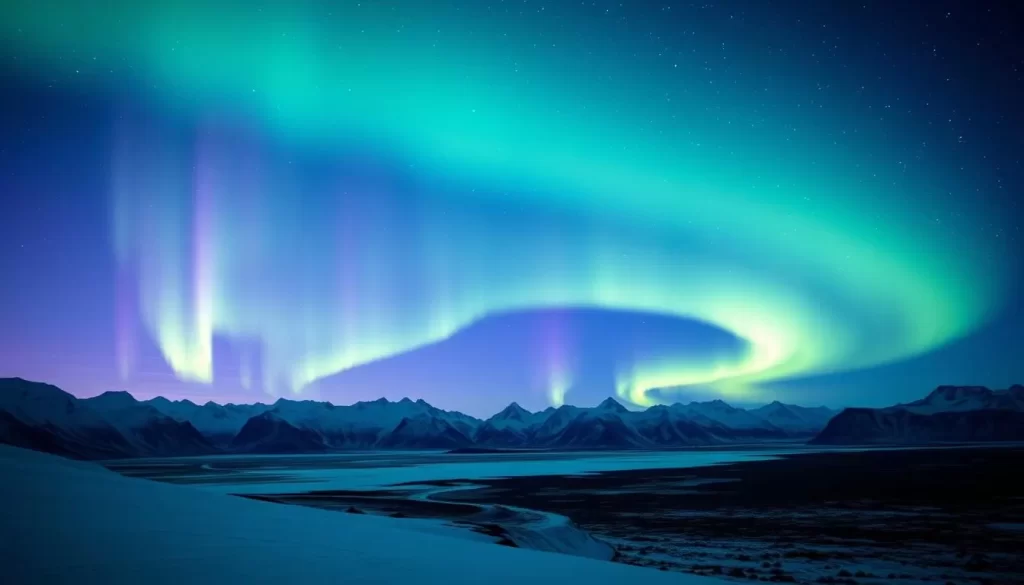
Spring and Autumn: The Transition Seasons
Spring (April-May) and autumn (September-November) are transition seasons that offer a mix of light conditions and activities. Spring celebrates the return of the sun, while autumn provides the first chances to see the northern lights. These seasons are unique and offer a different perspective on Svalbard’s landscapes.
Weather Considerations and What to Pack
When planning your visit to Svalbard, it’s crucial to pack for extreme cold with thermal layers, windproof outer layers, and insulated boots. Don’t forget extra camera batteries as they drain quickly in cold temperatures. Understanding the weather conditions and being prepared is key to a successful trip.
Must-Visit Museums in Longyearbyen
Longyearbyen, the world’s northernmost town, is home to several museums that offer a glimpse into the rich history and environment of the Svalbard archipelago. These museums provide a perfect indoor activity during harsh weather and offer crucial context for understanding the significance of this remote Arctic region.
Svalbard Museum
The Svalbard Museum is the premier cultural institution in Longyearbyen, offering comprehensive exhibits on the region’s geology, wildlife, climate change, and human history in an engaging, accessible format. You can learn about the animals that call Svalbard home, the local history of Longyearbyen, and nearby settlements.
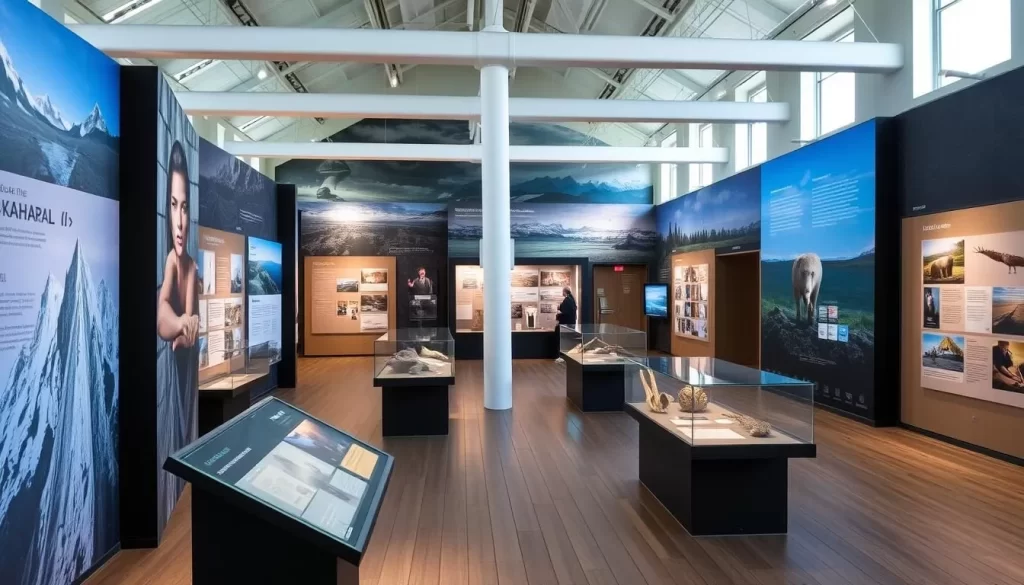
North Pole Expedition Museum
The North Pole Expedition Museum focuses specifically on Arctic exploration, documenting the many expeditions that departed from Svalbard in their quest to reach the North Pole. Although the presentation is detailed, it’s worth visiting if you’re interested in exploration history.

Both museums are conveniently located in town and can be visited in a single day, making them essential stops for any visitor interested in Arctic history. By visiting these museums, you’ll gain a deeper understanding of the unique environment and history of the Svalbard archipelago.
The Global Seed Vault: Doomsday Insurance
In the permafrost of Svalbard, a vast collection of seeds is stored as a safeguard against global catastrophes. The Svalbard Global Seed Vault, often referred to as the “Doomsday Vault,” is a secure seed bank that stores a vast collection of plant seeds from around the world to ensure their preservation.
Purpose and Significance
The primary purpose of the Svalbard Global Seed Vault is to store seeds representing a wide variety of plant species. Built deep inside a mountain on Spitsbergen island, the vault houses approximately 2.5 billion seeds, making it a critical component of the world’s strategy to protect its agricultural heritage. The location was chosen for its permafrost conditions and geological stability, providing natural refrigeration and protection for the seed collection.
The vault serves as humanity’s insurance policy against catastrophic events that could threaten global food security. It represents an extraordinary international collaboration, with contributions from nearly every country in the world.
Visiting the Seed Vault
While visitors cannot enter the vault itself, you can view its distinctive entrance and learn about its critical mission through guided tours. The tours explain the global significance of the Svalbard Global Seed Vault and its role in preserving crop diversity. Although access to the vault is restricted, the surrounding area offers a unique glimpse into the Arctic environment.
To visit, you can take a photo of the outside and explore the nearby surroundings, gaining insight into the importance of this global seed vault.
Polar Bear Spotting in Svalbard
Svalbard’s unique environment supports a significant population of polar bears, offering a rare opportunity for observation. With approximately 3,000 polar bears inhabiting the area, outnumbering the human population, Svalbard is one of the best places in the world to potentially spot these magnificent creatures.
Safety Regulations and Guidelines
When venturing outside settlement areas in Svalbard, it’s crucial to follow safety guidelines to minimize the risk of polar bear encounters. Carrying a rifle or traveling with an armed guide is mandatory, as polar bear encounters can be dangerous. This precaution ensures a safe experience for visitors while exploring the Arctic landscape.
Finding Polar Bear Art and Symbols in Town
Although actual polar bear sightings in Longyearbyen are rare, the town is filled with polar bear art, statues, signs, and symbols. You can find polar bear graffiti, statues on the side of the road, and even a famous boundary sign marking “Polar Bear Territory” on the edge of town. These elements reflect the significance of polar bears in Svalbard’s culture and environment.
Excursions for Wildlife Viewing
The best opportunities for responsible polar bear viewing come through guided boat excursions in summer or multi-day snowmobile trips in winter. Led by experienced guides, these tours maintain safe distances from the wildlife, providing a thrilling experience while ensuring the bears’ safety. Svalbard Jan Mayen offers a unique wildlife tour experience that is both exciting and educational.
Climate change poses a significant threat to Svalbard’s polar bear population, as diminishing sea ice affects their hunting grounds. Conservation efforts are increasingly important to protect these magnificent creatures and their habitat. By supporting responsible wildlife tourism and conservation initiatives, visitors can contribute to the preservation of polar bears in Svalbard.
Outdoor Adventures in Svalbard
Exploring Svalbard’s pristine wilderness is an experience like no other. The archipelago offers a wide range of outdoor activities that allow you to immerse yourself in its breathtaking Arctic landscape.
Dog Sledding Expeditions

Experience the thrill of dog sledding in Svalbard, where you can traverse through the snowy wilderness pulled by a team of enthusiastic dogs. Although Svalbard’s dogs may not be as conditioned as those in Lapland or Alaska, the experience remains authentic and exhilarating.
Snowmobile Safaris

Snowmobile safaris are a popular way to explore Svalbard’s vast and remote areas. These safaris range from short excursions to multi-day expeditions, allowing you to witness the stunning glaciers and Arctic landscapes up close.
Hiking Opportunities
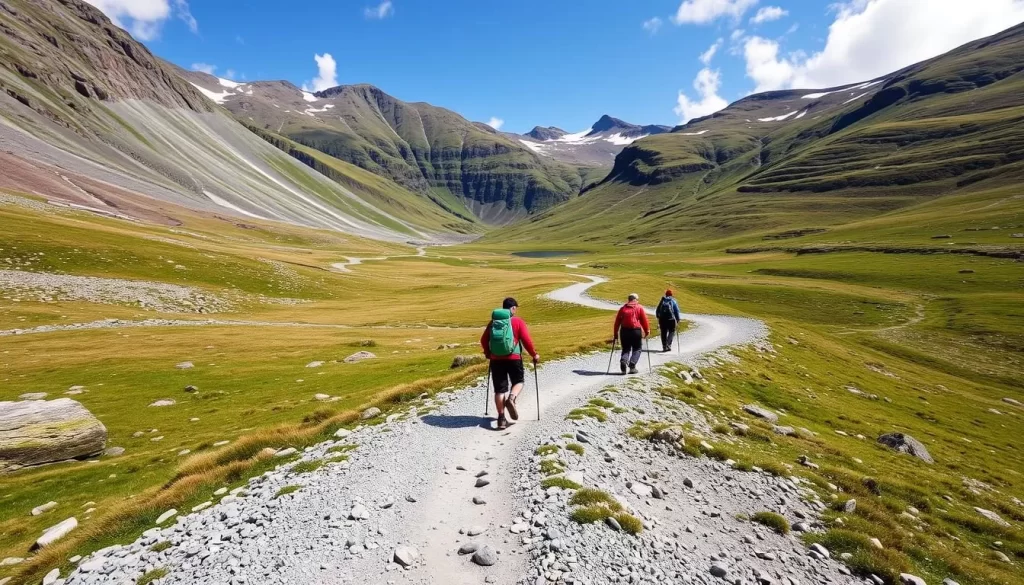
During the summer, Svalbard offers numerous hiking opportunities. Guided hikes are available for those venturing outside Longyearbyen, ensuring safety from polar bears. Popular routes include Plateau Mountain and Hiorthfjellet, offering spectacular views of the surrounding landscape.
Boat Trips and Fjord Cruises
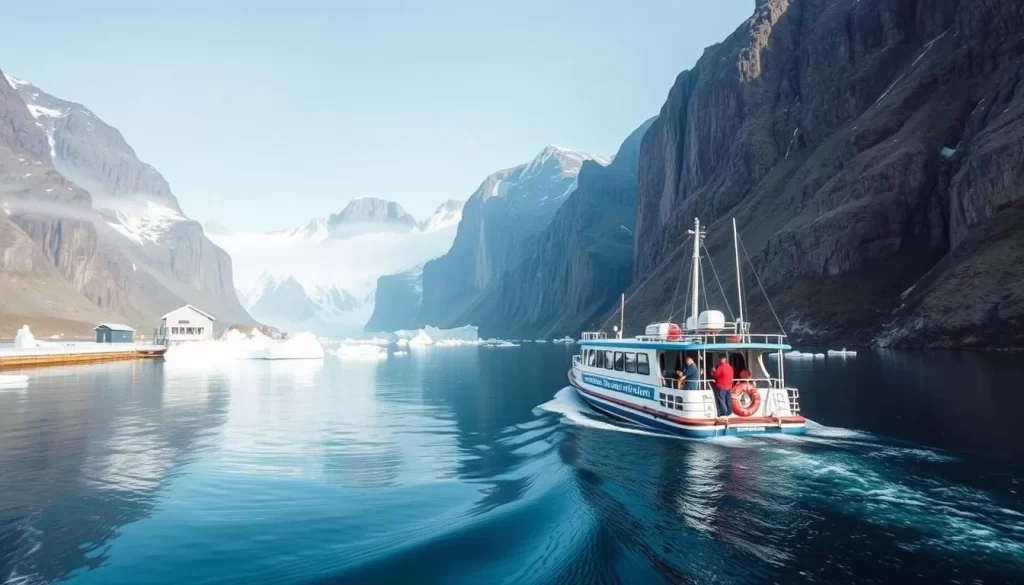
Boat trips and fjord cruises are ideal for witnessing Svalbard’s majestic glaciers and marine wildlife. You can visit remote settlements like Pyramiden and Barentsburg, and enjoy the serene beauty of the Arctic fjords during the ice-free months.
Svalbard’s unique wilderness and diverse outdoor activities make it an ideal destination for adventure-seekers. Whether you’re dog sledding, snowmobiling, hiking, or taking a boat trip, Svalbard promises an unforgettable experience in the heart of the Arctic.
Longyearbyen, Svalbard and Jan Mayen: Best Things to Do – Top Picks
In the world’s northernmost town, Longyearbyen, you’ll find a mix of adventure and cultural experiences that make Svalbard Jan Mayen a unique destination.
Svalbard Church: The World’s Northernmost Church
The Svalbard Church, located on a hill on the edge of town, is not only a spiritual haven but also offers panoramic views of Longyearbyen. You can visit this remarkable church, which stands as the world’s northernmost church, and enjoy the serene surroundings.
Gallery Svalbard: Arctic Art and Crafts
Gallery Svalbard, situated in Nybyen, a small settlement just south of Longyearbyen, showcases an impressive collection of Arctic-inspired art and crafts. This art gallery and crafts center is a great place to experience the creative expression influenced by the extreme Arctic environment.
To plan your visit, you can check the Gallery Svalbard opening hours in advance to ensure you don’t miss this unique cultural experience.

Svalbard Brewery: Arctic Beer Tasting
Established in 2015, Svalbard Brewery is renowned as the world’s northernmost brewery. You can take a tour and taste beers brewed with 2,000-year-old glacial water from Bogerbreen glacier, offering a truly unique experience in this Arctic town.
For a memorable experience, consider booking a Svalbard Brewery tour to sample their distinctive beers.

Beyond outdoor adventures, Longyearbyen offers several unique cultural attractions that shouldn’t be missed during your visit to Svalbard Jan Mayen. These include the Svalbard Church, Gallery Svalbard, and Svalbard Brewery, providing perfect activities between wilderness excursions or during inclement weather, allowing you to experience Svalbard’s unique culture and community life.
Shopping in Longyearbyen
Longyearbyen’s main street is lined with shops that offer a mix of practical outdoor gear and unique souvenirs that reflect the town’s Arctic character. As you stroll along the main pedestrian walkway, you’ll discover a variety of stores that cater to different interests.
Souvenirs and Local Crafts
Visitors to Longyearbyen can find a range of unique souvenirs, including polar bear-themed items, locally crafted jewelry made with Arctic materials, and traditional Norwegian knitwear. Fruene Café and Shop is a must-visit destination, offering delicious pastries and unique chocolates molded in the shape of polar bears and other Arctic animals. You can also find outdoor gear branded with Svalbard logos, making for a great memento of your trip.
Practical Shopping Tips
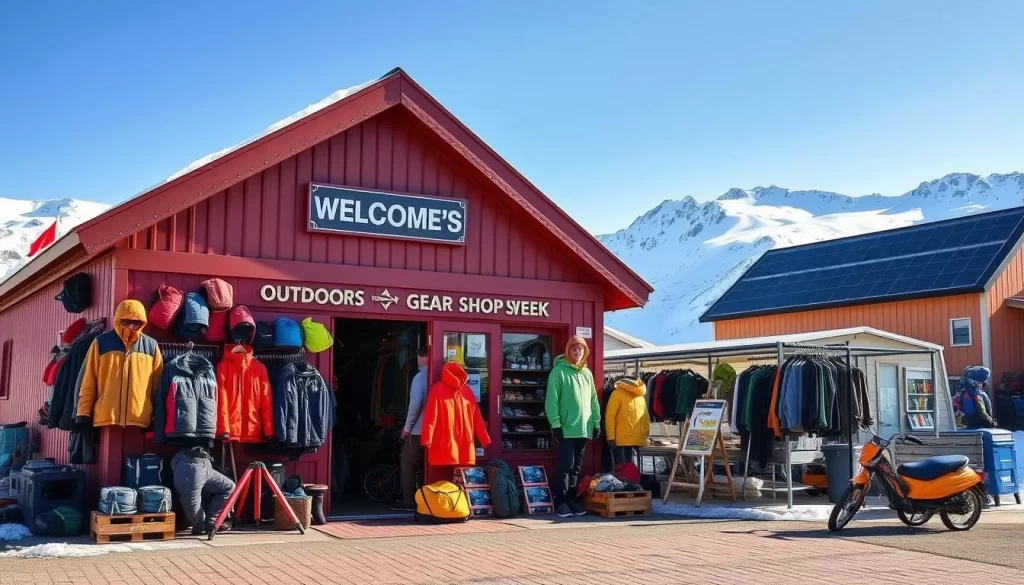
When shopping in Longyearbyen, remember to remove your shoes when entering most shops, following the local custom that dates back to coal mining days. While prices are generally higher than in mainland Norway due to shipping costs, some items like outdoor gear can be tax-free, making them potentially good value purchases. Be sure to explore the various shops along the main street to discover the best souvenirs and local crafts that Svalbard has to offer.
Culinary Experiences in Svalbard
Svalbard’s culinary scene is a surprising delight, offering a range of dining experiences that blend traditional Arctic cuisine with international flavors. As you explore Longyearbyen, you’ll discover a variety of restaurants that cater to different tastes and preferences.
Top Restaurants in Longyearbyen

Longyearbyen is home to several top-notch restaurants, each offering a unique dining experience. Huset Svalbard stands out with its award-winning wine cellar, boasting the northernmost wine collection in the world. Gruvelageret, located in a historic mining hut, serves a four-course gourmet meal featuring local ingredients like reindeer and halibut. For a more budget-friendly gourmet option, Polfareren is highly recommended for its exquisite dishes without the hefty price tag.
Kroa is another favorite among visitors, offering hearty moose burgers and a cozy atmosphere. Svalbar is perfect for those seeking comfort food and local beers in a relaxed setting.
Local Arctic Cuisine and Specialties
Svalbard’s local cuisine is characterized by its use of Arctic ingredients, including reindeer meat, Arctic char, and cloudberries. You can also find dishes featuring seal and whale, though the latter is more controversial. Locally foraged herbs and plants add a unique flavor to many dishes, making the culinary experience truly authentic and memorable.
Budget-Friendly Dining Options
For those on a budget, Fruene Kaffe Og Vinbar offers delicious pastries, sandwiches, and soups at reasonable prices. If your accommodation has kitchen facilities, preparing some of your meals can also be a cost-effective option. This way, you can enjoy the local flavors without breaking the bank.
Visiting the Russian Settlements
Beyond the outskirts of Longyearbyen, Svalbard’s Russian settlements await exploration, offering a unique cultural experience. You can visit these settlements to gain insight into the history and cultural heritage of the region.
Barentsburg: A Russian Mining Town
Barentsburg, the second-largest settlement in Svalbard, is a functioning Russian mining town with about 450 residents. It features Soviet-era architecture and is home to a Russian consulate and the northernmost Lenin statue in the world. You can explore the town’s history and cultural significance during your visit.
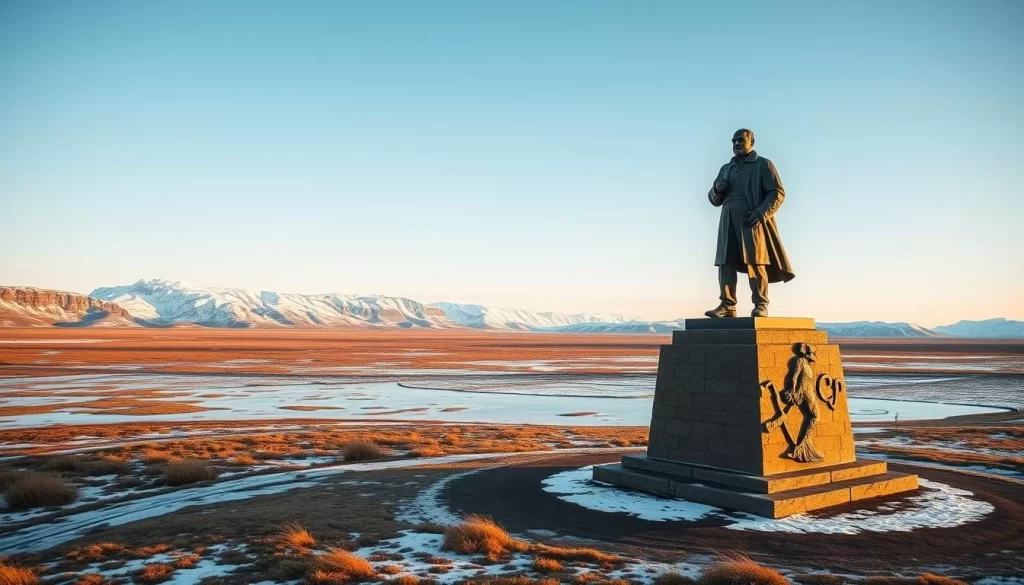
Pyramiden: A Ghost Town Frozen in Time
Pyramiden, once a thriving Soviet mining community, was abandoned in 1998 and now stands as a perfectly preserved ghost town. Time seems to have stopped at the end of the Soviet era, leaving behind a unique historical snapshot. Visiting Pyramiden offers a glimpse into Svalbard’s past and the lives of its former residents.

Visiting these settlements requires organized tours, either by boat in summer or snowmobile in winter, as there are no roads connecting them to Longyearbyen. However, due to current geopolitical tensions following Russia’s invasion of Ukraine, some tour operators have suspended trips to these Russian settlements. It’s essential to check the current availability before planning your visit to Svalbard.
Understanding the history and cultural context of these settlements enhances your experience and appreciation of Svalbard’s diverse heritage. As you plan your trip, consider the time of year and how it might impact your visit to these unique places.
Seasonal Activities and Events
Experience the Arctic like never before in Svalbard, where the changing seasons bring a variety of exciting activities and events. Svalbard, known for its harsh yet breathtaking environment, offers something unique for every time of the year.
Summer Activities
During the summer months (May-August), Svalbard comes alive with midnight sun hikes, boat safaris to spot an array of wildlife, kayaking among icebergs, and photography tours under the 24-hour daylight. The midnight sun provides a surreal backdrop for these adventures, making summer a peak season for tourists.
Winter Activities
Winter (November-March) in Svalbard is characterized by northern lights viewing, snowmobile expeditions, ice cave explorations, and the enchanting blue light of the polar night. The darkness of the polar night offers a unique experience, with the northern lights being a major attraction.
Annual Festivals and Events
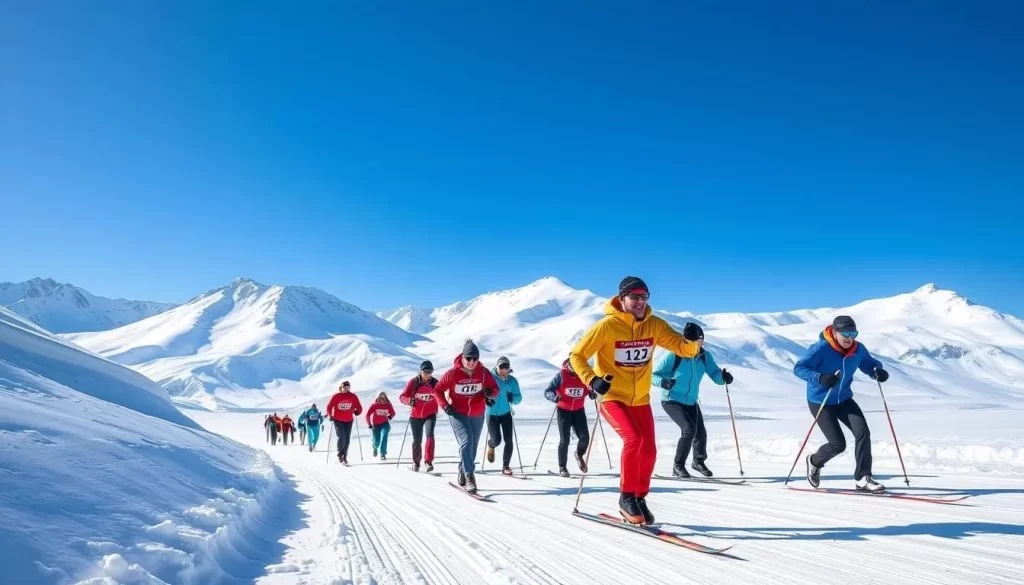
Svalbard hosts several annual events, including the Svalbard Ski Marathon in April, the Spitsbergen Marathon in June, which is the world’s northernmost certified marathon, and the Longyearbyen Literature Festival in September. These events attract visitors and participants from around the globe, adding to the community’s vibrant culture.
Where to Stay in Longyearbyen
Accommodation in Longyearbyen, Svalbard, ranges from luxurious hotels to budget-friendly hostels, ensuring a stay that’s both comfortable and memorable. Whether you’re looking for a high-end experience or a cozy budget stay, Longyearbyen has options to suit your needs.
Luxury Accommodations
For a luxurious stay, consider Funken Lodge, known for its elegant rooms and excellent restaurant. The Radisson Blu Polar Hotel is another top choice, offering spacious rooms with spectacular fjord views. It’s the largest hotel in Longyearbyen town, making it a great option for those seeking comfort and convenience.

Mid-Range Options
For travelers looking for mid-range accommodations, the Basecamp Hotel is a popular choice, offering unique trapper-style décor and a cozy atmosphere. Mary-Ann’s Polarrigg is another great option, featuring quirky, character-filled rooms in a converted miners’ barracks.

Budget-Friendly Stays
Budget-conscious visitors can opt for Coal Miners’ Cabins on the edge of Longyearbyen town or Gjestehuset102 hostel, both offering private rooms with shared facilities and kitchen access. This helps manage food costs and provides a more local experience for visitors to Svalbard and Jan Mayen.
Most accommodations in Longyearbyen include breakfast in their rates and feature common areas where travelers can share their Arctic experience. Booking in advance is essential due to limited capacity.
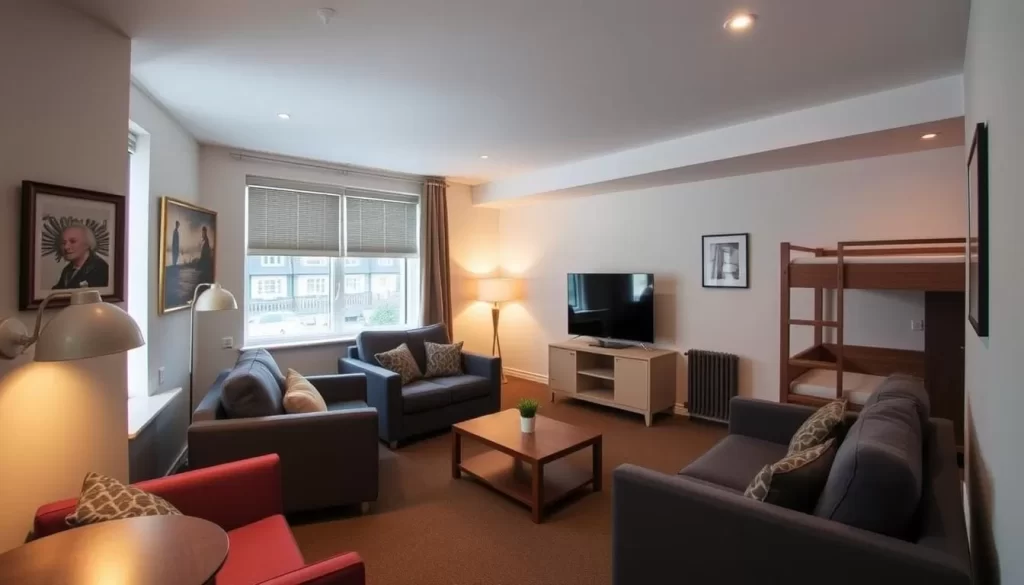
In conclusion, Longyearbyen offers a variety of accommodations to suit different budgets, from luxury hotels to budget-friendly hostels, ensuring that every visitor has a memorable stay in this unique Arctic town.
Practical Tips for Visiting Svalbard
When planning a trip to Svalbard, it’s essential to be aware of the practical considerations to ensure a safe and enjoyable journey. Visiting this Arctic frontier requires careful preparation and an understanding of the unique challenges it presents.
Safety Guidelines and Polar Bear Awareness
Safety is paramount when visiting Svalbard, with polar bear awareness being the most critical safety consideration for all visitors. To protect both humans and polar bears, strict regulations are in place. When traveling outside settlements like Longyearbyen, it’s mandatory to carry appropriate equipment, such as firearms, to defend against polar bear encounters. If you’re not trained in using a firearm, hiring a guide is a must.
- Never leave settlement areas without an armed guide or proper training in firearm use.
- Be aware of your surroundings and watch for signs of polar bears.
What to Pack for Arctic Conditions
Packing the right gear is crucial for a comfortable and safe trip to Svalbard. You should include thermal base layers, mid-layers for insulation, windproof and waterproof outer layers, insulated boots, and multiple pairs of gloves and socks. The key is to dress in layers to maintain body heat and protect against the harsh Arctic conditions.
Transportation in Svalbard
Transportation in Svalbard is limited due to its remote nature and lack of infrastructure. There are no roads between settlements, so travel between locations requires organized tours by boat, snowmobile, or occasionally helicopter. Planning your transportation in advance is essential to make the most of your trip.
Travel Insurance and Health Considerations
Comprehensive travel insurance is essential for visiting Svalbard. It should specifically cover Arctic activities, search and rescue operations, and medical evacuation. Healthcare facilities in Longyearbyen are limited to basic services, making it crucial to have adequate insurance coverage.
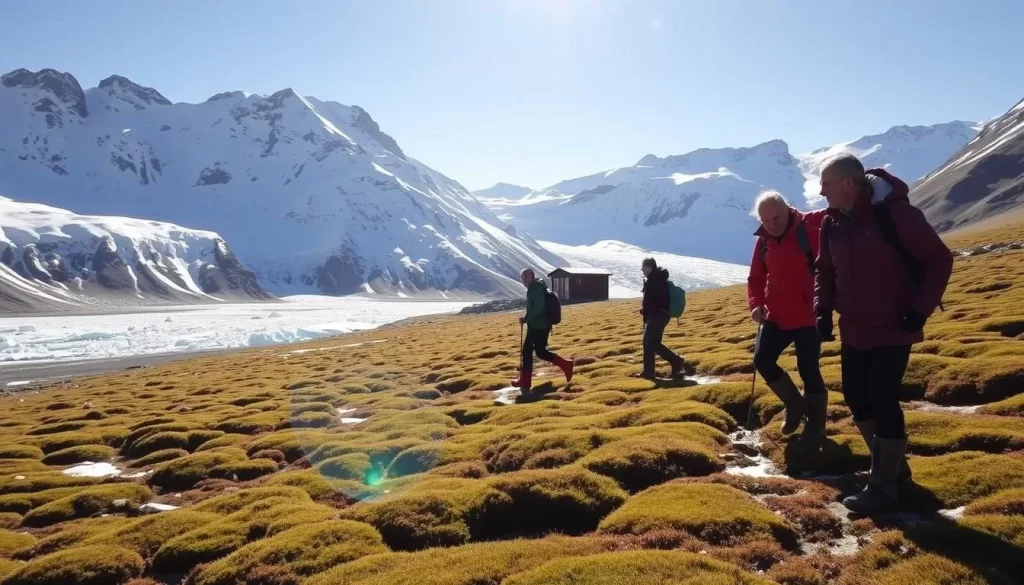
Sustainable Tourism in Svalbard
Sustainable tourism is a complex issue, especially in sensitive regions like Svalbard. On one hand, protecting the Arctic environment is crucial, but on the other hand, experiencing it firsthand can foster respect and care for the area. Careful planning and management are essential to balance tourism with environmental preservation.
Environmental Challenges
Svalbard faces significant environmental challenges, including climate change, which affects the archipelago at twice the global average rate. This impacts wildlife habitats and glaciers, making sustainable practices crucial. 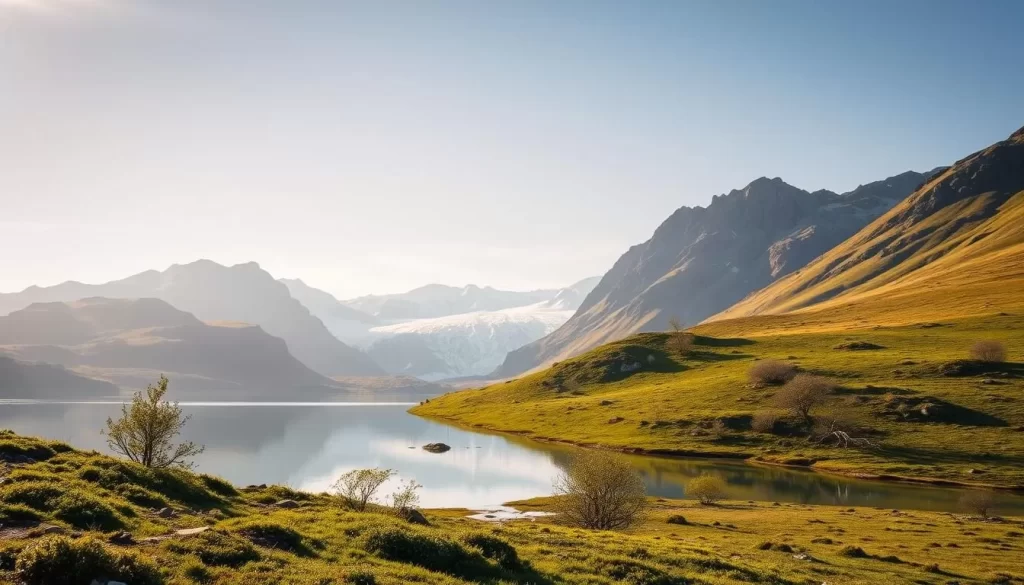
- Climate change is altering the delicate balance of Svalbard’s ecosystem.
- Visitors must follow “Leave No Trace” principles to minimize their impact.
How to Be a Responsible Visitor
To preserve Svalbard’s fragile environment, you should choose tour operators with strong environmental credentials. Respect wildlife by maintaining distance and following guide instructions. Supporting local businesses contributes to conservation efforts and provides economic benefits to the community.
- Select tour operators who follow strict environmental guidelines.
- Support local initiatives that contribute to conservation.
The above is subject to change.
Check back often to TRAVEL.COM for the latest travel tips and deals.
